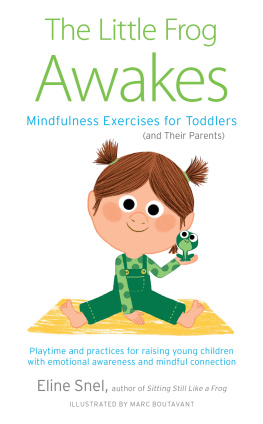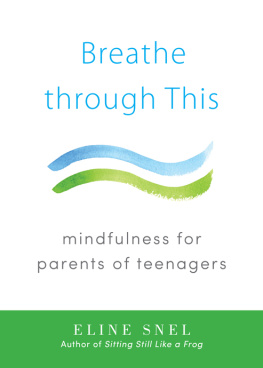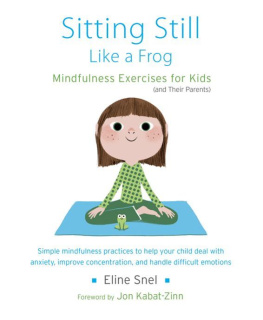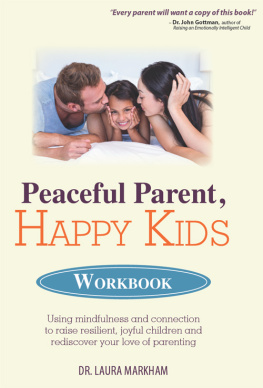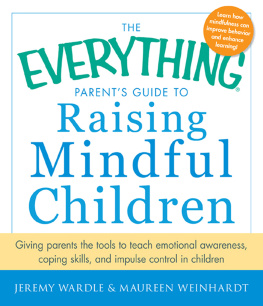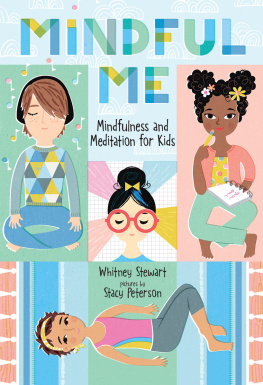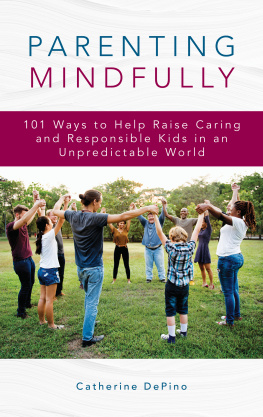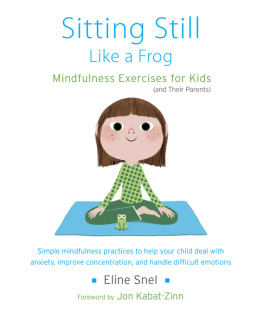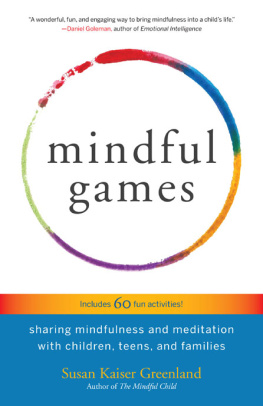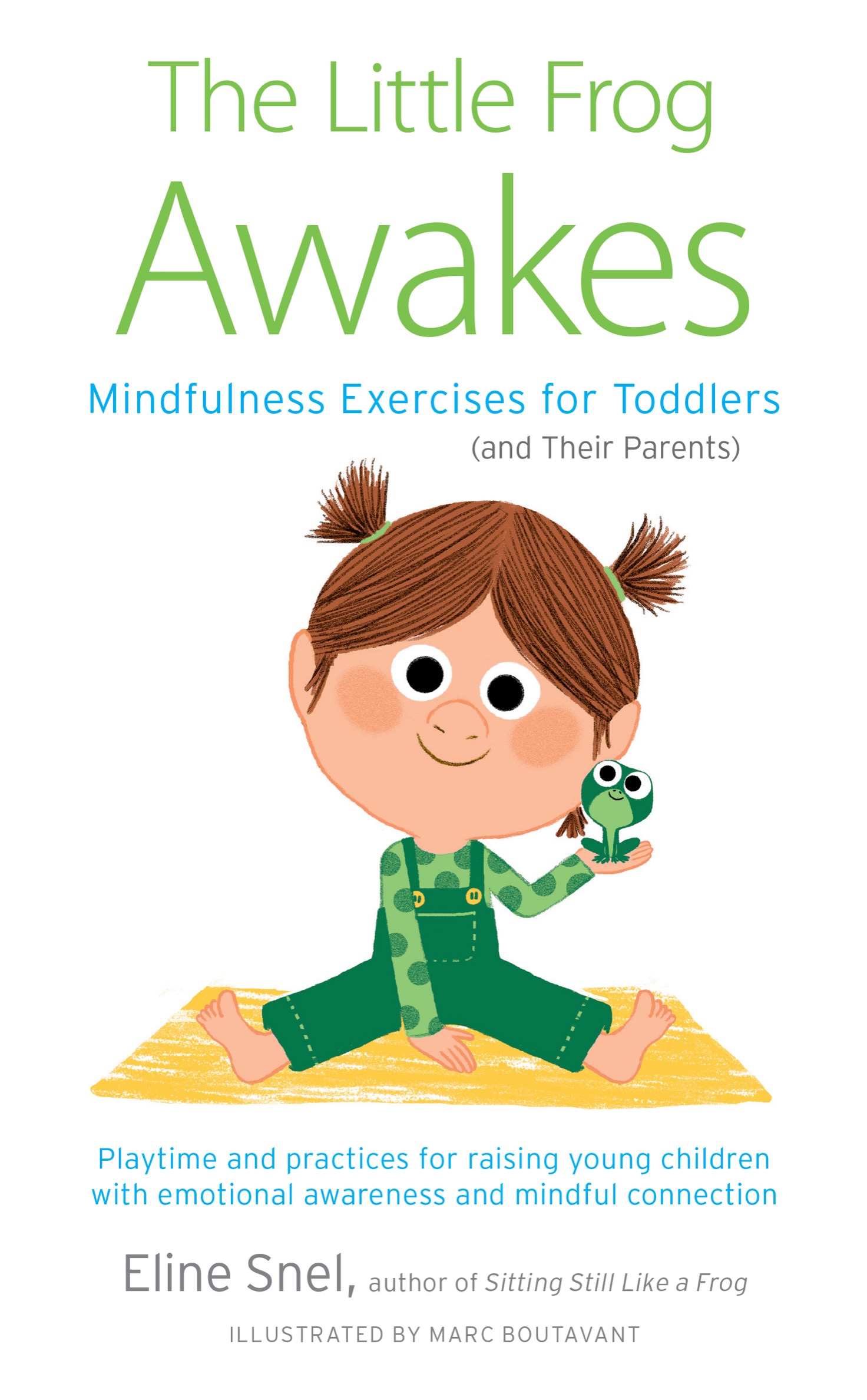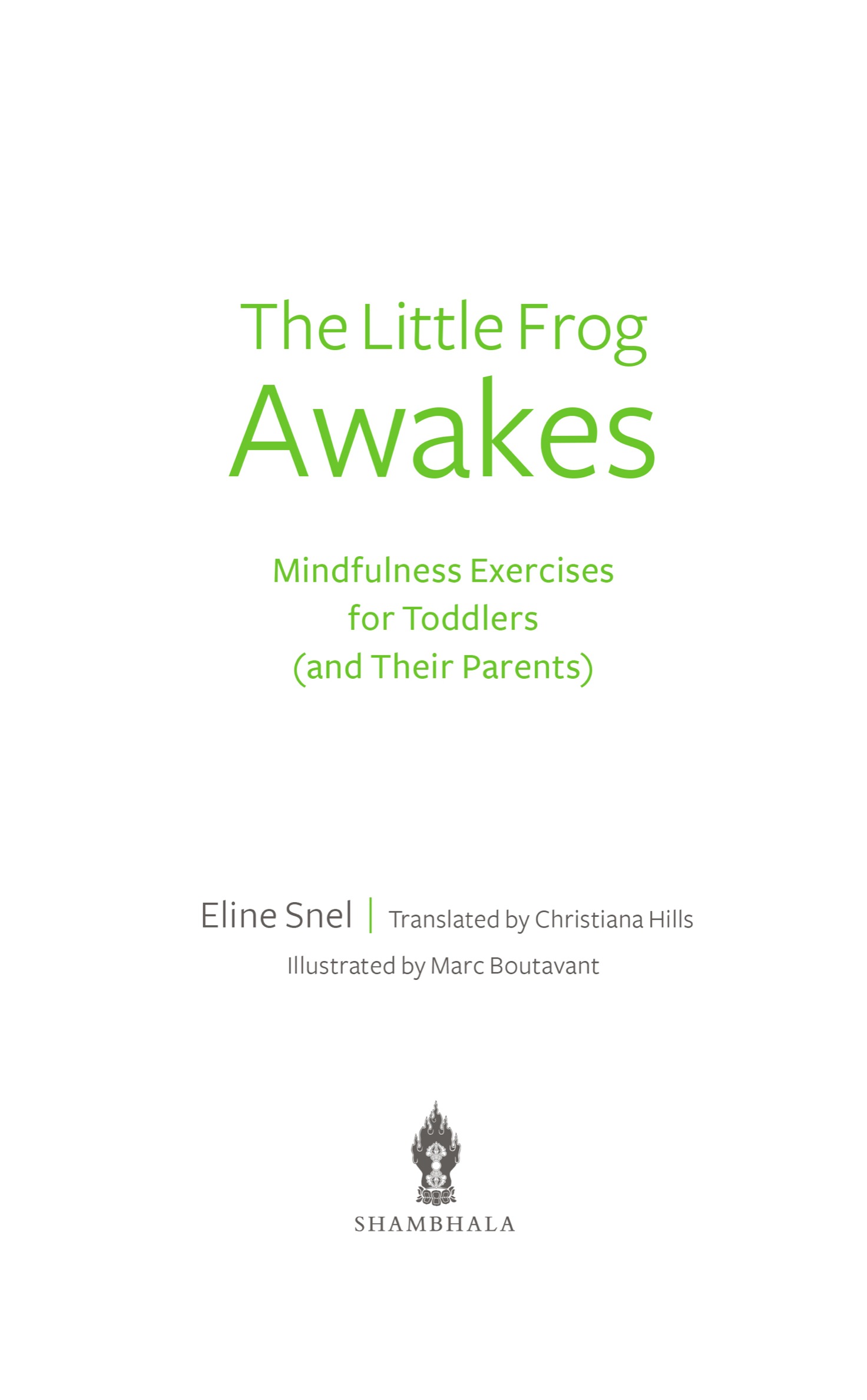Contents
Landmarks
Print Page List
Also by Eline Snel
Breathe Through This
Sitting Still Like a Frog
Sitting Still Like a Frog Activity Book
Shambhala Publications, Inc.
2129 13th Street
Boulder, Colorado 80302
www.shambhala.com
English translation 2022 by Shambhala Publications, Inc.
Translated by Christiana Hills
Originally published in France under the title Lveil de la petite grenouille: La meditation pour les parents avec leurs tout-petits. Les Arnes, Paris, 2020; Audio script: Eline Snel.
Note: This book should not be regarded as a substitute for competent medical advice.
Cover art: Marc Boutavant
Interior design: Allison Meierding
All rights reserved. No part of this book may be reproduced in any form or by any means, electronic or mechanical, including photocopying, recording, or by any information storage and retrieval system, without permission in writing from the publisher.
Library of Congress Cataloging-in-Publication Data
Names: Snel, Eline, author. | Hills, Christiana, translator. | Boutavant, Marc, illustrator.
Title: The little frog awakes: mindfulness exercises for toddlers (and their parents) / Eline Snel; translated by Christiana Hills; illustrated by Marc Boutavant.
Other titles: veil de la petite grenouille. English
Description: First U.S. edition. | Boulder, Colorado: Shambhala, [2022] | Identifiers: LCCN 2021018008 | ISBN 9781611809459 (trade paperback; acid-free paper)
eISBN 9780834844186
Subjects: LCSH: Mind and body. | Parent and child. | Child psychology.
Classification: LCC BF161 .S63513 2022 | DDC 128/.2dc23
LC record available at https://lccn.loc.gov/2021018008
a_prh_6.0_c0_r0
CONTENTS
PREFACE
WHY THIS BOOK?
My children are my teachers. One day, twenty-eight years ago, my youngest daughter, Anne, asked me, How do you get to sleep? This question awakened my curiosity. How should I answer such a question? And how can we find good answers to the questions children ask us? At school, for example, Annes teacher was constantly telling her to calm down or focus, but she never explained how to do it. These were my first steps into looking for solutions in the form of mindfulness and awareness exercises for children, especially as I had already been practicing meditation for a long time. These exercises did a great deal of good for my daughter.
Sometime later, when I was giving a mindfulness course to a group of teachers, one of them said, Its too bad I didnt learn all this when I was a kid! Thats what led me to develop a method for training children in mindfulness. For several years, the Dutch Ministry of Education has even reimbursed this training method for any teachers who request it.
In 2010, I published my first book, Sitting Still Like a Frog, which was translated into English in 2013. I wanted to help parents and children become familiar with mindfulness in a simple, playful waymindfulness symbolized by a frog. The book teaches them how to be fully present with their minds, hearts, and bodies. I wrote it based on my thirty years of experience teaching meditation and compassion. I felt the need to nourish childrens innate sense of curiosity and their natural gifts of empathy and compassion in the face of a society that is becoming more and more demanding. The book was met with huge success all over the world.
In many different countries and cultures, the frog helps children work their attention muscle; it tells them what to do so that they can be friends with their emotions. It also teaches them that we dont have to believe all of our thoughts and that kindness is like a soft rain that falls on everybody without forgetting anyone. With the frog, thousands of children ages five and up are practicing their favorite meditations on a daily basis. Not because they are being forced to but because they like doing it. They find calm and feel safe in the middle of lifes restlessness and the difficulties that can come with it. The training course for this approach, designed for teachers, psychologists, and parents (the Eline Snel method) is being used in more and more schools, childcare centers, and private practices.
Over the course of the many workshops and training courses I have given, many participants have asked me if a similar book exists for parents of young children, with advice for managing the stress of getting ready in the morning and prebedtime chaos. How can we find patience and trust in such moments? Where does sadness manifest in the body, and how can we learn to master our anger? In these fast-paced times, it is far from obvious to know how we can wholeheartedly accept our imperfections and identify the things that truly matter in order to live fully. Setting limits on screen time is hard for everyone; its just as difficult to show yourself kindness and compassion. Its like learning a new languageyou have to practice it. And its up to you to teach all of this to your children.
So, here is the book: The Little Frog Awakes, written for children between eighteen months and four years old and their parents, offering awareness exercises for you and your children as well as moments of mindfulness for the whole family.
In this book, children under the age of four will be able to learn through interactive stories, playful awareness exercises, and, above all, your examplethe way in which you communicate, the attention you give them, and your presence when they want something they cannot have. The short meditations are ideal for children ages three and up. After age four, childrens brains are developed enough to begin practicing the meditations found in Sitting Still Like a Frog. At that point, they can learn to name what they feel inside of them, which helps them accept even the most difficult emotions and wildest thoughts and do something with them. It also reinforces positive behavior and sows seeds of self-confidence.
You may find answers to many of your questions, but not all of them. Life doesnt have all the answers; its too vast, and at times wild and unpredictable. But you can always start by opening yourself up to the richness of the present moment. To now. To that smile, that little hand in yours, and your sigh of relief when the kids are finally asleep. All you need to do is truly see your children, listen to them, and understand their whole selves in the present moment, motivated by the deep desire to act in a kind, honest way.
This book explains how you can help your young children become attentive adults, with gentle spirits, warm hearts, and a clear idea of their inner needs, as well as what they can offer the big, wide world around them.
INTRODUCTION
A FEW WORDS ON RAISING YOUNG CHILDREN
We worry a lot about the topic of raising young children. Am I doing this right? Did I react too severely or too half-heartedly? Am I too controlling or too lenient?
You are probably a better parent than you think. You are stronger, but also more vulnerable; crazier, but also braver, and certainly less perfect. It can be calming to realize this. Like every parent, you can also learn to face parental stress, for which some exercises could be useful. That is the goal of this book. Because it is simply impossible to steer children into adulthood without some bumps or scratches along the way. We are all shaped by our past hurts and bruises. Ingrained rules, habits, and traditions from our childhood are often reactivated, even amplified at times, as soon as we create our own families. Its not easy to recognize that youre having a power struggle with your strong-willed child if you had a tough upbringing, for example. When youre accustomed to your freedom and a happy, carefree lifestyle, the arrival of a baby can be earth-shattering for you. You need just as much courage to admit that you exclude your partner from the process at times because you think you know far better than they do.

